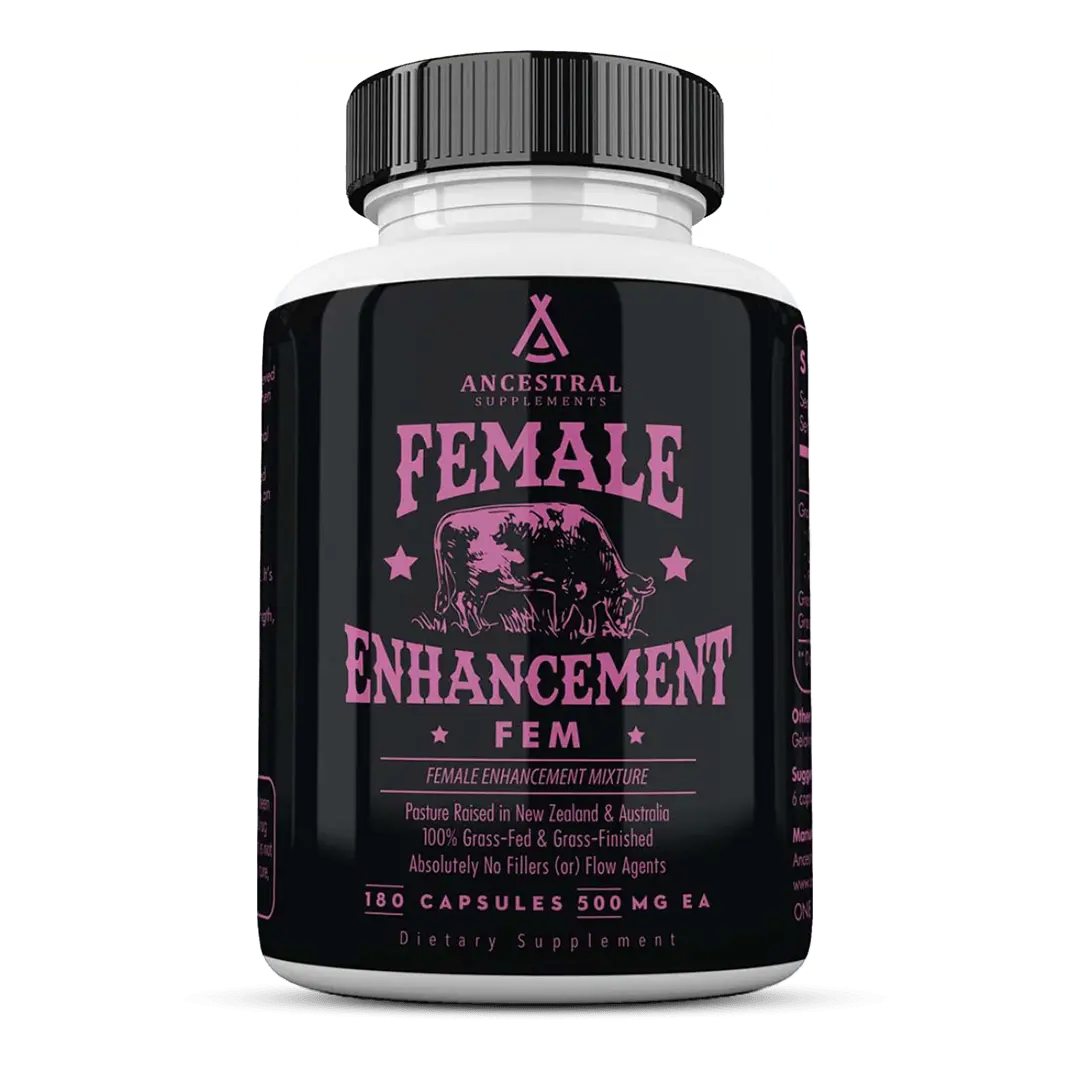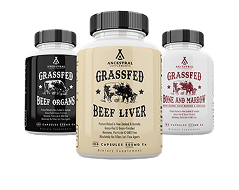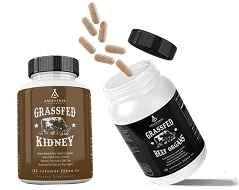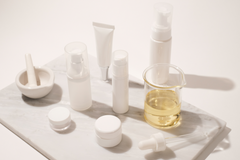The Complete Guide To Ancestral Eye Health
OUR ANCESTORS ENJOYED SUPERIOR EYESIGHT
Unlike most of us today, our ancestors enjoyed superior eyesight… this is strikingly illustrated in the visual acuity of ancient cave painters. Archeologists discovered a prehistoric cave painting of the Pleiades star group, in which the artist had painted ten stars in the constellation. Current day astronomers can only see six of these stars with the naked eye and require a telescope to see the other four.The Maori of New Zealand and Aboriginies of Australia are living examples of just how incredible our eyesight can be. For instance, Australian Aborigines can see animals a mile away that modern man can not see. The Maori can see the moons of Jupiter, which can only be seen by a western man with the aid of a telescope. These tribesmen can reliably notify the telescope viewer as to when an eclipse of one of the moons would occur. [3]
Without a doubt, our ancestors had amazingly acute eyesight, quite similar to modern day natives who consume the traditional foods of their culture. I believe that by adhering to ancestral diet and lifestyle practices we can reclaim our ancestral birthright of optimal vision.
WE EVOLVED CONSUMING EYES AND LIVER...
All traditional cultures recognized that certain foods were necessary to prevent blindness. In his pioneering work, Nutrition and Physical Degeneration, Weston A. Price tells the story of a prospector who, while crossing a high plateau in the Rocky Mountains, went blind with xerophthalmia, due to a lack of vitamin A. As he wept in despair, he was discovered by an Indian who then caught him a trout and fed him the flesh of the head and the tissues of the eyes. Within a few hours, his sight began to return and within two days his eyes were nearly normal. Our ancestors intuitively knew that eyes support eye health. Now, modern science knows that the richest source of vitamin A in the entire animal body is that of the retina and the tissues in the back of the eyes. [3]
Many cultures used liver, another extremely rich source of vitamin A, for various types of blindness. An ancient practice that has been documented throughout history involved first pressing the liver to the eye, and then eating it. The Egyptians described this cure at least 3500 years ago. Similar practices have been recorded in Russia, Java, and Newfoundland. Hippocrates was said to prescribe liver soaked in honey for blindness in malnourished children. Assyrian texts and Chinese medical writings from the 7th century both call for the use of liver in the treatment of night blindness. [4]
The ways of our ancestors have been carried down through many generations and are still being practiced today. Deep in the Siberian tundra, natives take down massive yaks and they, of course, go for liver first but they won't begin their journey home without popping an eyeball in their mouth. Yak eyes are cherished as a survival food by the Siberian people. In the Arctic, the Inuit hunt and feast upon massive seals. When they have a visitor, an offering of the seal eyeball is an act of generosity from the host. This offering of eyes to the guest of honor has been observed for generations, across the globe. In many cultures, eyes have been and still are, considered a delicacy.
The nourishing wisdom that allowed our early ancestors to live a vibrant, disease-free life has been tucked away for convenient, cheap, hyperpalatable food-like products that support big industry as opposed to our health. There’s no doubt that processed foods such as polyunsaturated fats, white flour and sugar are the driving force of the modern day epidemics of disease. It makes sense that the sensitive tissues in the eye, with their fine complexity, would be the first among many biological systems in the body to show signs of degeneration. The good news is, reclaiming optimal vision is as simple as getting a few key nutrients into your diet such as animal-based Vitamin A, Zinc, Phospholipid Omega-3/DHA, Lutein, Zeaxanthin, and Magnesium which are all present in ancestral foods like Liver, Egg Yolks and Wild Caught Fish Eggs.
Animal-Based Vitamin A
Vitamin A, also known as retinol because of its presence in the retina of the eye, plays a crucial role in supporting our vision by maintaining a clear cornea and allowing us to see in low light conditions. Retinol is one of several fat-soluble activators necessary for the assimilation of minerals in the diet. Its many functions include forming and maintaining healthy teeth, skin, mucous membranes, skeletal and soft tissues. It also plays a role in protein utilization. The majority of nutrition experts insist that humans can transform carotenes from fruits and vegetables to vitamin A. This is only conditionally true and is highly inefficient. Infants, diabetics, and those with poor thyroid function or zinc deficiency, (a group that makes up nearly half the US population) don’t make the conversion. And as for the rest of us… excessive consumption of alcohol, nonheme iron, prescription drugs, polyunsaturated fats, and even cold weather can hinder the conversion of carotenes to vitamin A. [7]
Keep your vision, get vitamin A in your diet. Look to whole food animal sources of vitamin A-rich foods like Grass Fed Beef Liver, pasture raised eggs, and wild caught fish eggs.
Lutein and Zeaxanthin
Lutein and zeaxanthin are part of the carotenoid family. Both of these carotenoids can be found in the macula and retina of your eyes, where they help filter blue light to protect your eyes from damage. They improve visual acuity and scavenge harmful reactive oxygen species. Several studies suggest that these carotenoids prevent cataracts and the progression of advanced macular degeneration. [8]
While many insist that you can absorb lutein/zeaxanthin from fruits and vegetables, this is only conditionally true as it is highly inefficient (similar to the assumption that one can convert carotenes to Vitamin A). Elite sapiens, the descendants of the baddest mammalian predators that ever lived, prefer Wild Caught Fish Eggs and pastured egg yolks as a more bioavailable source of lutein and zeaxanthin.
Omega-3 Fatty Acids / DHA
The cell membranes of your retina contain a high concentration of DHA, a long chain omega-3 fatty acid that promotes healthy retinal function. These omega-3 fats not only form the cells of our eyes, but they also have anti-inflammatory properties, increase proper blood flow and support the eyes in producing more tears. Omega-3s are essential in maintaining overall health. They are found in every cell in your body and help regulate biological functions, including those of the cardiovascular, reproductive, immune, and nervous systems.
"DHA is the primary structural fatty acid in the gray matter of the brain and the retina, so it makes sense that a diet rich in DHA, may help slow the degeneration of the retina, including macular degeneration, the most common form of blindness in older people." -Dr. Ann Bajart, MD [9]
DHA is a unique essential nutrient for neural and visual development. If you want to feed your eyes, (and your brain!) you should be sure to get plenty of DHA in your diet. The highest concentrations of DHA are found in Grass Fed Beef Brain, pastured egg yolks, and wild-caught fish eggs.
Zinc
Zinc is an essential trace mineral, or "helper molecule", that plays a vital role in bringing vitamin A from the liver to the retina in order to produce melanin, a protective pigment in the eyes. Zinc is highly concentrated in the eye, mostly in the retina and the vascular tissue layer under the retina called the choroid. Certain symptoms of Impaired vision, such as poor night vision and cloudy cataracts, have been linked to a zinc deficiency.[10]
The most abundant whole food sources of zinc you can find are wild and pastured animal meats, wild caught shellfish, raw dairy, and pastured egg yolks... all the basic constitutes of a primal diet.
Magnesium
It's virtually impossible to get enough magnesium from diet alone. Look for a transdermal magnesium oil. Apply to feet before bedtime and go to sleep. Our eyes should be maintained with the most important mineral for muscle health... that's magnesium! The majority of the population is deficient in magnesium and the proactive potential of supplementing magnesium extends far beyond eye health (think heart health, and magnesium shortage is also a primary root cause of high blood pressure, stroke and GERD). Magnesium deficiency is almost as common as the widespread shortages of zinc and selenium. It's estimated that 80% of us require more of this mineral.
Signs of deficiency include loss of visual clarity, tension, heart irregularities, cramps, insomnia and high blood pressure. The problem with an advanced magnesium deficiency, which is typically evidenced by cramps, is that the stomach lining loses some of its capacity to absorb magnesium. In this instance, oral supplementation can be ineffective. Transdermal magnesium supplementation is an effective way to deliver magnesium directly through the skin. Consume magnesium rich foods and apply transdermal magnesium oil to feet before bed.
ANCESTRAL LIFESTYLE PRACTICES FOR EYE HEALTH
- Consume Wild Caught Fish Eggs, Grass Fed Beef Liver, Grass Fed Bone and Marrow, and Pastured Egg Yolks
- Red light therapy and sunsets - Get outdoors at sunrise and sunset. if you cant, get yourself a low emf red light. (Sauna Space Photon)
- Stop wearing sunglasses - You need natural light to regulate your circadian rhythms. Ditch the shades!
- Wear blue light blocking glasses - Exposure to blue light after sunset disrupts your hormones and your sleep.
- Practice the "Bates Method" - Relax your eyes. Stress causes strain... which leads to poor vision.
- Practice varying depth exercises - Focus on objects in nature at various distances.
- Practice cold water plunges to improve small vessel vascular health (especially the face and head).
- Get in a hyperbaric chamber - Increases the percentage of oxygen throughout the body which supports cellular healing on all levels.
ANCESTRAL WISDOM BACKED BY SCIENCE
Red Light Therapy and Sunsets
You know that feeling you get when you watch the sun rise or set? The beauty in the morning or evening colors… that’s infrared light. I’m sure by now you have heard all about red light therapy by now.
Wavelengths of both red light and near infrared light have been tested in multiple clinical trials and found to be safe and effective for ocular health and vision protection. People with age-related macular degeneration and glaucoma have shown significantly improved vision with the aid of light therapy treatments, and people with eye injuries have experienced faster healing, with less inflammation. [11]
It's true! Red light and near-infrared light have amazing biological effects down to the cellular level... especially in our mitochondria, the powerhouse of our cells. Red light therapy has been linked to improvements in inflammation, sleep, skin health, testosterone levels, and much more! And the best part is that we can get these wavelengths of light for free! Just get outdoors at sunrise and at sunset! It's that easy!
It's unfortunate that most people just don't have the desire or the time to simply get outdoors, so they prefer to spend thousands on machines and bulbs that mimic these natural wavelengths and end up emitting an unhealthy amount of EMFs in the process (the SaunaSpace Photon is the exception). I encourage you to get outdoors, breathe the air, connect with the bare Earth and enjoy the sunrise.
Our ancestors knew this too! Sun gazing is an ancient technique that has been used by native people throughout history. They considered the sun as a divine source of energy that heals numerous ailments. If you haven’t heard of sun gazing before, it’s simple. Just get outside, take off your shoes, put your feet on the Earth, and gaze in the direction of the sun within the first hour after sunrise or the last hour before sunset. Ease into it to avoid any potential harm... but don't worry, during these golden hours, UV light is minimal and will not damage your eyes. This daily exposure to real, ancestral, infrared light is able to support healing the body on the cellular level. NOTE: start with just 10 seconds a day and work your way up.
Stop Wearing Sunglasses
First of all, our ancestors definitely didn’t wear sunglasses. They didn’t need or want to block the natural light from their eyes. Humans are not nocturnal creatures… we thrive in the sunshine.
You need natural sunlight throughout the day to help regulate your hormones and circadian rhythm. Rays from the sun enter your eyes, then stimulate the hypothalamus in your brain, which is connected to the pineal gland. The pineal gland is largely responsible for regulating your circadian rhythm via the secretion of melatonin. Sunglasses inhibit this process. It’s as simple as that.
Your eyes are evolutionarily designed to interact with sunlight. Forcing your eyes to operate through an unnatural dark lens can cause eye fatigue and unnecessary stress. “Over-training” your eyes is a surefire way to end up with reading glasses thicker than my biceps… Ditch the shades!
Wear Blue Light Blocking Glasses (after sunset)
“Exposure to high levels of blue light close to bedtime can suppress the production of the sleep-promoting hormone melatonin by the brain’s pineal gland,” says Charles Czeisler, M.D., chief of the Division of Sleep and Circadian Disorders at Brigham and Women’s Hospital in Boston.
When the sun set our ancestors gathered by firelight... in the modern world, we gather around one of the most potent suppressors of melatonin, blue light. The activity and rest cycle in us mammals is one of the circadian rhythms that normally gets entrained by environmental cues such as natural light and darkness. These cues no longer exist in the modern world because blue light is now ubiquitous... blue lights have infiltrated every corner of the home in the form of smartphones, TVs, fluorescents, LEDs, etc... The UVEX glasses block this non-native light spectrum. I suggest wearing the UVEX glasses at least 2 hours before going to bed. Even when our whole house is lit only by firelight only, I find myself reaching for the glasses because I don't even want a glimpse of artificial ambient light to disrupt my sleep physiology. They cost 10 bucks... the benefits are massive. Ego holds people back. Here's a great link to explain much better... Many customers tell me that it's the best $10 investment that they have ever made... try 'em!
Practice the "Bates Method" - Relax Your Eyes
Dr. Bates did extensive research showing that the predominant theory regarding how our eyes function is incorrect. He noted that most optometrists, opticians, and ophthalmologists are aware that eyesight gets worse over time with the use of corrective lenses, yet they continue to prescribe them. One of Dr. Bates' most extraordinary discoveries is that our vision is mostly mental. Though we need physical eyes to see, our mind and how we use it is the primary factor in visual acuity. [12] By learning the correct habits of normal eyesight, one can regain keen vision and even improve beyond what is considered normal. The main assumptions of Bates theory are as follows:
Recovery of good vision is possible... just as a broken limb can heal, the organ of vision can be brought back to optimal function with rehabilitation exercises and proper nutrition.
Abandon the artificial lenses and glasses... they are just a crutch. Corrective lenses and eye surgery, like Lasik, don't fix the problem. Glasses will not improve eyesight but actually, play a role in the progressive deterioration of vision. The eyes will never heal and will progressively need stronger lenses. These crutches just allow one to function without fixing the disability.
Acuity is variable... Bates found that visual acuity varies depending on the overall physical and emotional state. Dr. Bates came to the conclusion that most visual defects are due to bad habits related to strain and stress. The ability of passive and dynamic relaxation is the first and basic technique of improving the vision. Relax the eyes, muscles and also the mind. Meditate as a method of improving your vision.
Sungaze... According to Dr. Bates, sungazing provides anti-bacterial and anti-inflammatory support for the eyes. Sungazing releases harmful stress from the eye muscles, lowers sensitivity to bright lighting, allows people to overcome the apprehension of light, and stop wrinkling their eyebrows. Bates has outlined his specific sungazing protocols in his work called "solarization". But the idea is simple and mentioned above in the sungazing section.
Practice Varying Depth Exercises
When is the last time you focused on something farther away then your cell phone, laptop, tv, a billboard or oncoming traffic? Our ancestors would have been focusing at varying distances all day long. For instance, during their daily tasks of making tools, studying animal tracks, scanning the horizon for wild game and using the stars for navigation their gaze would have shifted between fine focus and seeking detail in the distance. So how do we recreate this in the modern world?
Look to nature...focus your gaze at the bottom of a tree trunk, follow the trunk line all the way to the tip of the tallest branch and back down to the base. Bonus points for doing this while you walk.
Thumbs up...extend your thumb out in front of you as far as you can. Start by focusing your gaze at the tip of your nose, then shift your gaze to your thumb, next focus on the horizon. Repeat this process as a varying depth exercise.
Draw something...Grab a notebook, a pencil, and sit outside. Pick a few objects and start drawing. You'll notice your focus shifting naturally, near and far. This is great for stress relief too!
Check out Hyperbaric Oxygen Therapy
In the modern world, we live mostly sedentary lives plagued with poor circulation, fatigue, and brain fog. We dwell in homes and cities with poor air quality constantly breathing in environmental toxins. Our ancestors' pristine natural environment and consistent level of intense activity likely provided them with oxygen-rich blood coursing through their veins. Stepping into a hyperbaric chamber is a clinically proven, therapeutic hack that optimizes your body’s energy production and healing capacity. Within the chamber, air pressure is up to 3 times greater than normal which forces more oxygen into our tissues. Hyperbaric oxygen improves mitochondrial function, helps with detoxification, inhibits inflammation and stimulates stem cell production. if the price tag has you running for the door, try out the Wim Hof deep breathing method... it's certainly not as effective but provides similar results on a smaller scale and it's free.
Sources and References
- Fishman, Stanley A. "The Benefits of Organ Meats." Tender Grassfed Meat. N.p., 09 Dec. 2014. Web. 17 June 2017.
- "Spleen, 500mg, 180 Capsules." Dr. Ron's Ultra-Pure. N.p., n.d. Web. 17 June 2017.
- Ancestral Dietary Strategy to Prevent and Treat Macular Degeneration Chris Knobbe, M.D.
- https://www.westonaprice.org/health-topics/abcs-of-nutrition/vitamin-a-saga/
- Lee R, Hanson W. Protomorphology: The Principles of Cell Auto-Regulation. Lee Foundation for Nutritional Research, Milwaukee, 194
- http://jgp.rupress.org/content/jgp/18/6/905.full.pdf
- https://www.healthline.com/nutrition/8-nutrients-for-eyes#section2
- https://www.ncbi.nlm.nih.gov/pmc/articles/PMC3705341/
- https://www.health.harvard.edu/heart-health/omega-3-for-your-eyes
- https://www.aoa.org/patients-and-public/caring-for-your-vision/diet-and-nutrition/zinc
- https://joovv.com/pages/science
- www.centeredvision.com
- http://nourishingbroth.com/articles/dr-pruddens-31-cases-treating-cancer-with-bovine-tracheal-cartilage/



















